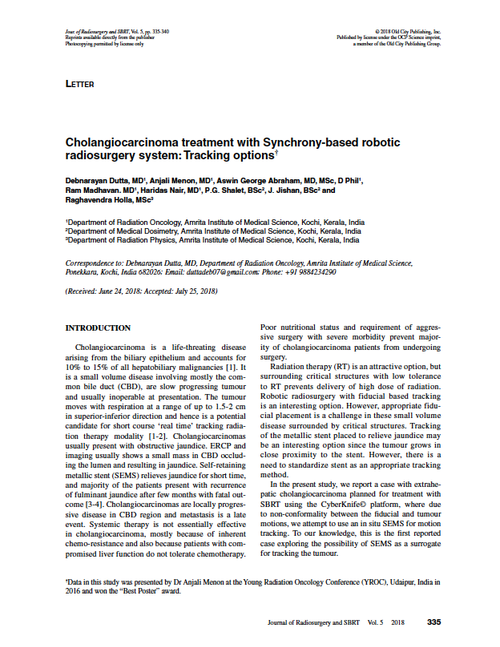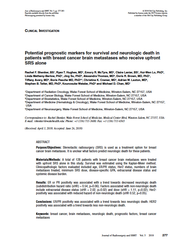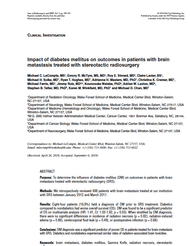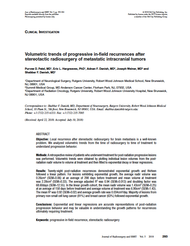- Home
- Journal Contents Downloads
- JRSBRT Downloads
- JRSBRT 5.4, p. 335-340
Product Description
Cholangiocarcinoma treatment with Synchrony-based robotic radiosurgery system: Tracking options
Debnarayan Dutta, Anjali Menon, Aswin George Abraham, Ram Madhavan, Haridas Nair, P.G. Shalet, J. Jishan and Raghavendra Holla
Cholangiocarcinoma is a life-threating disease arising from the biliary epithelium and accounts for 10% to 15% of all hepatobiliary malignancies [1]. It is a small volume disease involving mostly the common bile duct (CBD), are slow progressing tumour and usually inoperable at presentation. The tumour moves with respiration at a range of up to 1.5-2 cm in superior-inferior direction and hence is a potential candidate for short course ‘real time’ tracking radiation therapy modality [1-2]. Cholangiocarcinomas usually present with obstructive jaundice. ERCP and imaging usually shows a small mass in CBD occluding the lumen and resulting in jaundice. Self-retaining metallic stent (SEMS) relieves jaundice for short time, and majority of the patients present with recurrence of fulminant jaundice after few months with fatal outcome [3-4]. Cholangiocarcinomas are locally progressive disease in CBD region and metastasis is a late event. Systemic therapy is not essentially effective in cholangiocarcinoma, mostly because of inherent chemo-resistance and also because patients with compromised liver function do not tolerate chemotherapy. Poor nutritional status and requirement of aggressive surgery with severe morbidity prevent majority of cholangiocarcinoma patients from undergoing surgery.
Radiation therapy (RT) is an attractive option, but surrounding critical structures with low tolerance to RT prevents delivery of high dose of radiation. Robotic radiosurgery with fiducial based tracking is an interesting option. However, appropriate fiducial placement is a challenge in these small volume disease surrounded by critical structures. Tracking of the metallic stent placed to relieve jaundice may be an interesting option since the tumour grows in close proximity to the stent. However, there is a need to standardize stent as an appropriate tracking method.
In the present study, we report a case with extrahepatic cholangiocarcinoma planned for treatment with SBRT using the CyberKnife© platform, where due to non-conformality between the fiducial and tumour motions, we attempt to use an in situ SEMS for motion tracking. To our knowledge, this is the first reported case exploring the possibility of SEMS as a surrogate for tracking the tumour.
After payment has been processed for your order of a digital copy (PDF) of this article, you will see a download link on your completed order page and also receive an email containing a download link. The links, which will enable you to download one copy of the article, will expire after 24 hours.
 Loading... Please wait...
Loading... Please wait...








